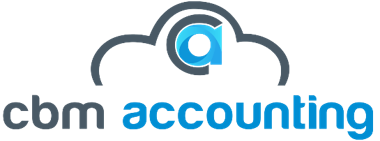[lwptoc]

Navigating the UK tax system can seem daunting, but understanding personal tax allowances is a crucial step in managing your finances effectively. These allowances reduce the amount of income you pay tax on, ultimately impacting your overall tax bill. This blog post breaks down the key personal tax allowances in the UK, helping you understand how they work.
What are Personal Tax Allowances?
Personal tax allowances are amounts of income that you can earn before you start paying income tax. They essentially provide a tax-free portion of your earnings.
The Personal Allowance:
- This is the most well-known allowance. For the 2024/25 tax year, the standard Personal Allowance is £12,570.
- This means you can earn up to £12,570 without paying any income tax.
- However, the Personal Allowance is reduced by £1 for every £2 of income above £100,000. This means that if you earn £125,140 or more, you will lose your entire personal allowance.
Marriage Allowance:
- If you’re married or in a civil partnership, and one of you earns below the Personal Allowance while the other is a basic-rate taxpayer, you may be able to claim the Marriage Allowance.
- This allows the lower earner to transfer £1,260 of their Personal Allowance to their partner, potentially reducing their tax bill.
Blind Person’s Allowance:
- If you’re registered as blind or severely sight impaired, you may be entitled to the Blind Person’s Allowance.
- This allowance is in addition to the Personal Allowance and can further reduce your tax liability.
Personal Savings Allowance:
- This allowance allows you to earn interest on your savings without paying tax.
- The amount you can earn tax-free depends on your income tax band:
- Basic-rate taxpayers: £1,000
- Higher-rate taxpayers: £500
- Additional-rate taxpayers: £0
Dividend Allowance:
- If you receive dividends from company shares, you may be able to use the Dividend Allowance.
- For the 2024/25 tax year, the dividend allowance is £500.
- Any dividends received above this amount are then taxed, and the rate of tax applied depends on your income tax band.
Key Considerations:
- Tax Year: The UK tax year runs from April 6th to April 5th of the following year.
- Tax Codes: Your tax code is used by your employer or pension provider to calculate how much income tax to deduct from your pay. Ensure your tax code is correct to avoid overpaying or underpaying tax.
- Self-Assessment: If you’re self-employed, receive income from rental property, or have other untaxed income, you may need to complete a Self-Assessment tax return.
- Changes to Allowances: Tax allowances can change from year to year, so it’s important to stay informed.
Tips for Maximizing Your Allowances:
- Understand Your Entitlements: Familiarize yourself with the allowances you’re eligible for.
- Check Your Tax Code: Regularly check your tax code to ensure it’s correct.
- Keep Accurate Records: Maintain accurate records of your income and expenses.
- Seek Professional Advice: If you’re unsure about any aspect of tax allowances, consult with an accountant or tax advisor.
- Utilize ISAs: Individual Savings Accounts (ISAs) offer tax-free savings and investment opportunities.
HMRC Resources:
- The HMRC website provides detailed information on personal tax allowances and other tax-related topics.
- HMRC also offers online tools and calculators to help you understand your tax liability.
By understanding and utilizing your personal tax allowances, you can effectively manage your finances and minimize your tax burden. Remember to stay informed about any changes to tax laws and seek professional advice when needed.

